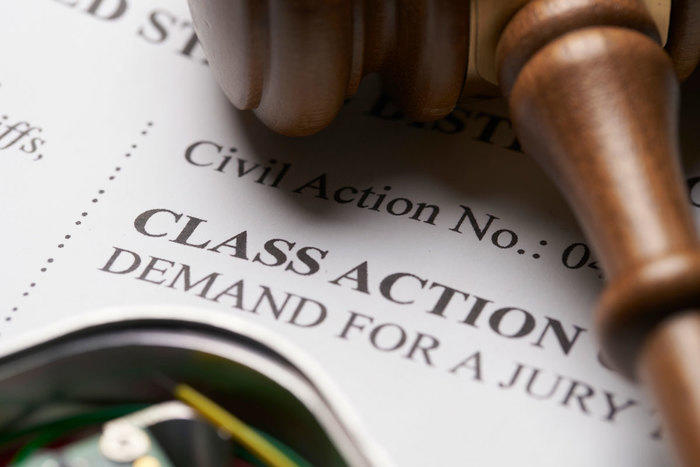Checking Out Class Action Suits: What You Need to Know
Class activity legal actions have actually come to be significantly widespread in today's lawful landscape, with individuals joining forces to seek redress against organizations and firms. In this discussion, we will discover the ins and outs of course action legal actions, clarifying their meaning, the requirements for filing, and the possible advantages and drawbacks involved. Furthermore, we will certainly explore the steps associated with a class activity claim and take a look at some recent spots instances that have actually formed this area of legislation. Understanding the intricacies and nuances of class activity lawsuits is essential for any person looking for justice in a collective way, so let's start our exploration with each other.
The Interpretation of Course Action Legal Actions
What exactly is the interpretation of a class action lawsuit? A class action claim is a lawful action submitted by a team of individuals that have comparable claims versus an offender. It allows a a great deal of individuals, referred to as the course members, to collaborate and seek their claims collectively, as opposed to each specific filing a different suit. Course action suits are generally brought when the number of prospective complainants is also large for private lawsuits to be useful. They are typically used in situations including consumer security, product obligation, protections fraud, and employment issues.
Among the vital components of a course action lawsuit is that the lead plaintiff, additionally referred to as the course agent, represents the interests of all the course participants. The court selects the lead complainant based on their capability to fairly and effectively stand for the class. The lead plaintiff functions closely with the course activity attorney to look for and build a strong case payment or other remedies in behalf of the whole class.
In order for a class activity suit to proceed, the court has to certify the class. This means that the court establishes that the legal action satisfies certain needs, such as numerosity (a large adequate number of course participants), commonality (usual concerns of law or truth), typicality (the claims of the lead complainant are common of the course), and adequacy of depiction (the lead complainant and class advise can standing for the class's passions) When the class is licensed, the suit can progress, and any kind of judgment or settlement got to will put on all class participants unless they pick to opt-out.
Class activity lawsuits offer a necessary purpose in supplying access to justice for people who might not have the resources to seek their cases separately. They likewise promote performance in the lawful system by combining similar insurance claims right into a solitary action, lowering the concern on both the court and the events involved.
Requirements for Submitting a Course Activity Suit

One more demand is that the course needs to be adequately many. The precise number of class members required may vary depending on the territory and the nature of the instance. It is typically anticipated that the course needs to be huge sufficient that signing up with all the private complainants into a single claim is more efficient than having multiple separate claims.
Furthermore, it is important that the class representative, who is the private or entity bringing the claim in support of the course, has common claims and defenses to those of the class members. The representative should also have the ability to properly and rather represent the interests of the whole class.

Benefits and Drawbacks of Course Activity Claims
Class action suits provide both benefits and downsides for complainants and offenders associated with the legal process. On the one hand, one of the considerable benefits of course action lawsuits is that they provide a affordable and reliable means for individuals with similar cases to go after justice collectively. By settling various comparable situations into one legal action, course actions simplify the legal process and conserve time and resources for both complainants and defendants.
One more advantage of class activity lawsuits is that they enable individuals with restricted sources to seek payment for their problems. In cases where the prospective recuperation is small, private lawsuits may not be financially sensible. However, by signing up with pressures in a class action, plaintiffs can merge their sources and enhance their opportunities of obtaining a reasonable resolution.
Furthermore, class activities can promote social modification by holding firms accountable for their activities. By bringing focus to prevalent transgression or defective items, class actions can press firms to transform their practices, improve product safety, or carry out reforms.
Nonetheless, course activities additionally have downsides. One possible disadvantage is that private plaintiffs may have limited control over the lawsuits procedure and the ultimate outcome of the situation. The lead plaintiffs and their lawyers generally make crucial choices in support of the whole course, which may not always align with the private rate of interests of each course participant.
In addition, course actions can be lengthy and lengthy, frequently taking years to reach a resolution. The intricacy and dimension of these claims can result in delays and long term lawsuits, which can be discouraging for both defendants and check that complainants looking for a timely resolution.
Actions Entailed in a Class Activity Claim
The procedure of a class activity legal action commonly starts with the identification of a potential course and the declaring of a grievance. As soon as a team of individuals who share similar cases versus an accused is determined, the lead plaintiff, or course rep, files a complaint in support of the entire course. This complaint lays out the supposed wrongdoing and looks for damages or various other relief for all participants of the class.
After the issue is submitted, the court will certainly establish whether the situation satisfies the requirements for class qualification. These demands commonly include numerosity (a huge enough class), commonness visit this site (similar legal insurance claims), typicality (the lead complainant's insurance claims are depictive of the course), and competence of representation (the lead plaintiff and their lawyer can properly stand for the course's interests)
If the court accredits the course, notification is offered to all prospective course participants, providing them the chance to opt-out if they desire to pursue their own private claims - BioVie class action lawsuit. If an enough variety of class members stay, the instance will continue to the discovery stage, where both sides gather proof and details relevant to the claims
Adhering to exploration, the celebrations may take part in negotiation arrangements or proceed to trial. If the case goes to trial and the class dominates, the court will certainly establish the appropriate damages or relief to be awarded to the course participants.
Recent Spots Course Activity Claims
With a strong understanding of the actions included in a course action claim, it is now essential to take a look at some recent site situations that have made a substantial influence in the lawful landscape. Future FinTech class action lawsuit. These situations have not only shaped the means course activity legal actions are carried out however have likewise produced changes in various industries
One such landmark case is the Volkswagen emissions scandal, which led to the largest course activity settlement in automobile history. In 2015, it was exposed that Volkswagen had actually installed software application in their lorries to rip off exhausts examinations. This deceptiveness impacted millions of consumers worldwide, leading to a class action suit. The settlement gotten to in 2016 totaled up to approximately $15 billion, compensating affected vehicle proprietors and penalizing on Volkswagen.
An additional significant case is the Johnson & Johnson talc suit. Hundreds of ladies filed legal actions against the company, declaring that their talc items caused ovarian Resources cancer cells. In 2018, a court awarded $4.7 billion in problems to 22 plaintiffs. This situation elevated issues concerning the safety of baby powder and motivated Johnson & Johnson to modify their product labeling.
These recent spots cases demonstrate the power of course action legal actions in holding companies accountable for their activities and looking for justice for afflicted people. They work as instances of how class activity suits can produce significant adjustments and protect the legal rights of consumers.
Conclusion
In final thought, class action lawsuits are a lawful system that allows a team of people to collectively seek justice for an usual complaint. Comprehending the actions and requirements involved in submitting a class activity lawsuit is crucial for people seeking to seek this legal avenue.
One of the vital aspects of a class activity suit is that the lead plaintiff, additionally understood as the course agent, represents the passions of all the class participants.In order for a class activity claim to proceed, the court has to certify the course. This implies that the court identifies that the legal action satisfies particular demands, such as numerosity (a large sufficient number of course members), commonness (typical inquiries of legislation or reality), typicality (the insurance claims of the lead plaintiff are regular of the course), and adequacy of depiction (the lead plaintiff and course guidance are qualified of representing the course's rate of interests) As soon as the class is licensed, the lawsuit can relocate forward, and any type of judgment or settlement reached will apply to all course members unless they choose to opt-out.
The process of a course activity suit generally begins with the recognition of a prospective class and the declaring of a problem.
Comments on “The Archer-Daniels-Midland Class Action Lawsuit Unpacked: Stay Educated”